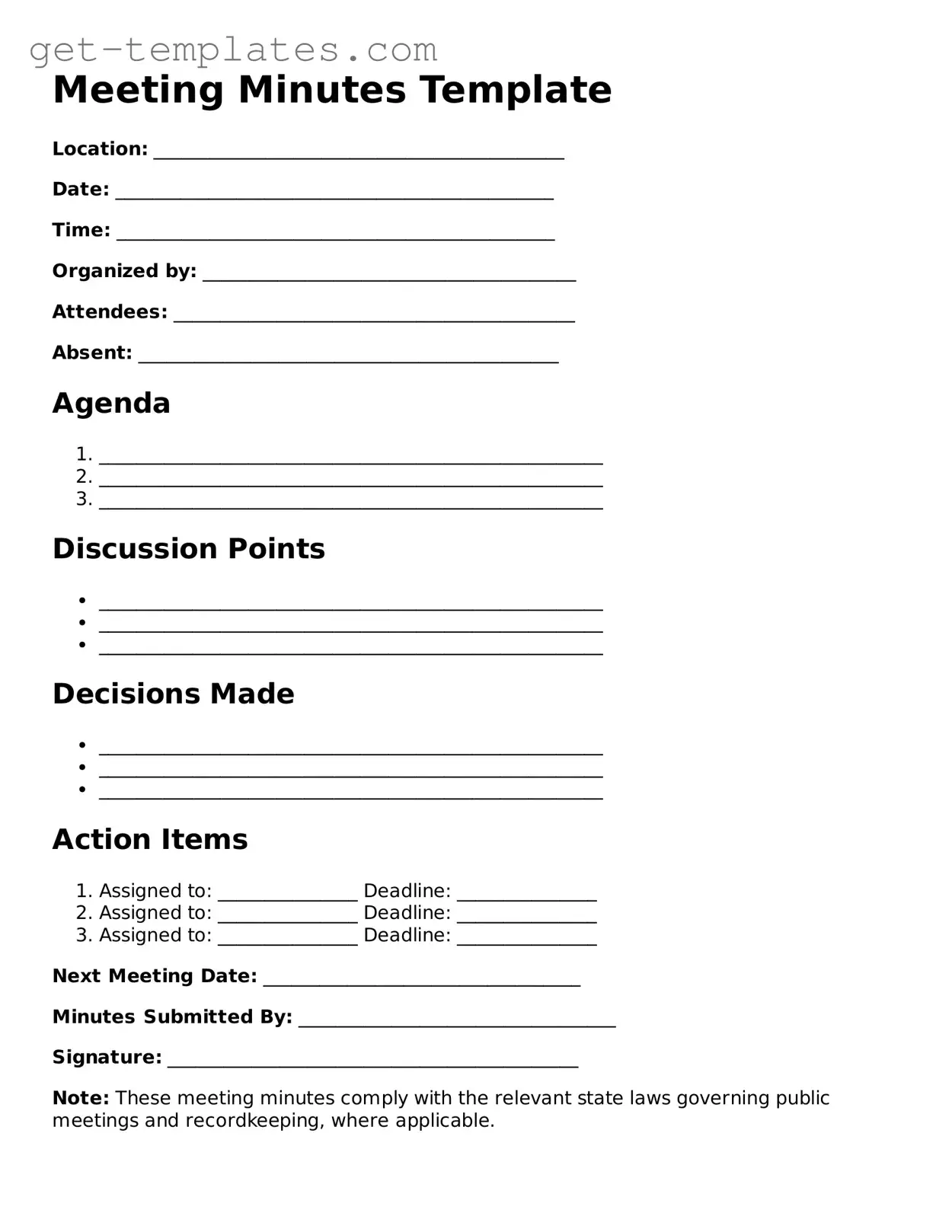Meeting Minutes Template
Location: ____________________________________________
Date: _______________________________________________
Time: _______________________________________________
Organized by: ________________________________________
Attendees: ___________________________________________
Absent: _____________________________________________
Agenda
- ______________________________________________________
- ______________________________________________________
- ______________________________________________________
Discussion Points
- ______________________________________________________
- ______________________________________________________
- ______________________________________________________
Decisions Made
- ______________________________________________________
- ______________________________________________________
- ______________________________________________________
Action Items
- Assigned to: _______________ Deadline: _______________
- Assigned to: _______________ Deadline: _______________
- Assigned to: _______________ Deadline: _______________
Next Meeting Date: __________________________________
Minutes Submitted By: __________________________________
Signature: ____________________________________________
Note: These meeting minutes comply with the relevant state laws governing public meetings and recordkeeping, where applicable.
